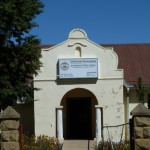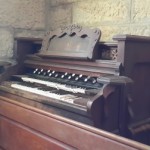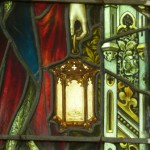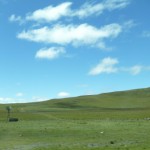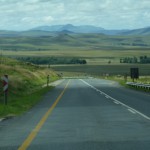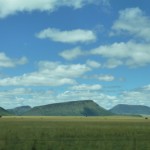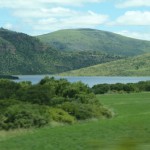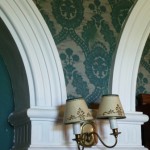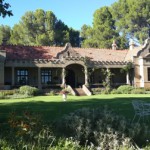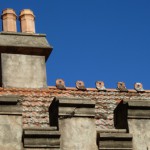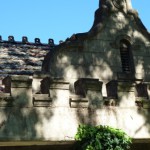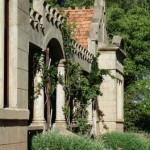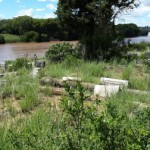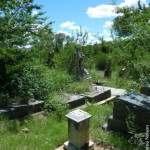This morning’s schedule is filled with a strict series of carefully coordinated train trips that will carry me from the south coast of England through London Town to the edge of the Cotswolds – Banbury, to be precise. There, my “adopted grandmother” will meet me when my final train for the day pulls into the station at 12:05, but much needs to fall into place first.
I Know Where You Live[d]!
Charlotte Walker, recorded as the informant of great grandmother Kate Isabella Bolton’s birth, lived at 3 Trinity Mews in Hastings so, naturally, I’m going to swing past the place before heading off to the station to catch my first train which leaves just after 08:00.
Trinity Mews is roughly a block and a bit away but I still jog-walk there for fear of being late for the first leg of my northbound journey. The property is marked as private so I don’t go in but snap a few pics from the street.
Oh, for more time (and a peek inside Number 3)! I long to uncover who Charlotte Walker was. All I know is that she was present at Great Grandma Kate’s birth but was she the midwife? A friend of the family? Perhaps there’s a baptism record or a newspaper clipping somewhere that would make the connection for me. Perhaps title deeds to the Trinity Mews residence would answer some questions. I wonder if I’ll ever know. For now, I have to content myself with standing outside the home of one who witnessed my great grandmother’s entrance into this world.
Monday Morning Madness
I motor back to Cambridge Gardens, snapping a spooky selfie on Brassey Steps as I go.

I grab my bags, check out (i.e. leave the key in the door – foreign concept to a South African!) and make my way to Hastings Station. The platform is insanely busy and, I realise, it’s school rush hour. Consequently, the arrival of the train signals a rather tense jostle for position as I join the tide of satchels, briefcases and shopping bags vying for a spot on it. I only have 5 minutes between its arrival at Brighton and my next one’s departure for London Victoria, so can’t afford to miss it. There’s no sitting room left and those of us standing are so tightly packed that it takes a few attempts before the doors manage close successfully.
Thankfully, I make my connection to London Victoria and, with the train having emptied considerably, I peel off my backpack and find a seat. Barely an hour later, I wrestle my luggage onto my back again and hightail it through London Victoria to Victoria Underground Station. The direct route, amid all the construction, involves stairs and so it’s here that I’m particularly grateful to have my luggage on my back. I catch the underground to Oxford Circus and then once more from there to Marylebone.
I walk through to London Marylebone station and collect my ticket for my final train trip of the day from the self-service machine. Phew – what a morning! The platform for the Banbury departure is not yet listed on the boards so I grab a cappuccino while I wait – a fitting reward for a hectic schedule, skilfully executed. Until now.
I look up at the boards and notice that the platform for the 11-something to Banbury has now made an appearance. Shouldering my baggage once more, I make my way through the gates and bundle myself into a quiet carriage. It’s not long before we leave London behind and are cutting our way through the English countryside.
The Consequence of Carelessness
The train makes several stops along the way and, after about forty minutes or so, I almost instinctively become aware that it’s not going to make it to Banbury by 12:00. As I process this thought, I cast my mind back to the booking I’d made. I remember seeing another train scheduled to leave London Marylebone at around the same time as the one I’d chosen but it was scheduled to take almost an hour longer. “Ain’t nobody got time for that!” was the thought that had gone through my head when I booked my ticket and now here I was, inadvertently aboard the wrong 11-something to Banbury 🙁
As the realisation dawned, my heart sank. The fact that I had caught the incorrect train and was going to arrive late at my destination didn’t bother me; it was that my adopted grandmother had offered to drive to Banbury to meet me at the station and now I wasn’t going to be there – that bothered me a great deal. Mortified at the thought, I scold myself severely before considering an appropriate course of action.
She doesn’t have a mobile phone (that I know of) but I wonder whether I can get hold of her before she leaves home. My mobile, which has thus far had no problems finding a network, now stubbornly refuses to connect. For the remainder of the trip, I continue trying to call, all to no avail. I fly out of the train as we eventually pull to a stop in Banbury. Swinging myself down the stairs, I frantically search the parking lot – nothing. I retrace my steps to the longer term parking – no sign of that familiar face there, either.
Catching public transport is the next option but I want to make certain she’s arrived home first and isn’t still searching for me. My phone has not yet found itself so it’s time to go old school and use the payphone. For that, I need the correct coins, which I don’t have, so I figure that’s a good enough reason to buy a Ribena in the station shop. Clutching my precious change, I make the call and discover she’s not yet there. After a ten minute wait, I try again and this time she picks up – yay! We chat briefly, I apologise profusely, and then dash out of the station building to hail a cab.
Granny Oxford
We negotiate the traffic out of Banbury and soon Oxfordshire is flying past in a blur of green. My thoughts turn to my adopted grandmother. She was a teacher at my mother’s school, George Watson’s Ladies College in Edinburgh, back when my mother was a student there. They stayed in touch through the years and I met her during a trip to the UK with my mum in the 80s, I think.
We corresponded erratically after that and, years later, in the late 90s, while I was doing Oracle Forms development on a Fleet Management System in Bracknell, she helped me maintain some semblance of sanity during what was a particularly difficult time of long working hours and relentless project deadlines. Often, if I had a weekend off and it was my turn to use the pool car, I would head north on the hour and a half-ish drive to spend a couple of days with her. It was then that she began referring to me as her adopted granddaughter. One of my colleagues at the time dubbed her “Granny Oxford” and, while she lives in Oxfordshire, not Oxford, and isn’t my biological granny, the name stuck.
“Which way?” my driver asks suddenly, pulling me out of my reverie. I look around. I don’t usually come into Sibford this way but soon get my bearings, even though it’s been eight years since my last visit. I direct him the rest of the way and, a few minutes later, I’m hugging Granny Oxford and her sister, who now lives with her.
Home Away from Home
“Dinner’s not quite ready,” I’m told as I walk through the door, so I go upstairs to put my luggage down. Nothing has changed. The familiar guest room feels like home, from the pink paint on the walls to the rose-patterned curtains, to the window overlooking the apple tree in the front garden, to the wooden floor and the white dresser. I breath it all in deeply and exhale slowly before making my way downstairs again.

Dinner (or lunch, as I know it) is a delicious stew, and is followed by dessert and an afternoon filled with catch-up chats. One of Granny Oxford’s outstanding characteristics is her incredible industriousness and that hasn’t changed either. She’s constantly baking or making or learning something. Her larder inevitably contains an array of home-baked goods, her hands are always busy and her calendar is usually covered with a generous sprinkling of appointments. She introduced me to needlework when I first met her and, on this particular evening, she’s putting the finishing touches on a Christmas stocking she’s made for the WI (Women’s Institute) meeting we’re apparently attending tomorrow 😉
Exhausted, I eventually fall into bed and drift off into contented slumber, but not before whispering a prayer of thanks for awesome adopted family 🙂



















































































